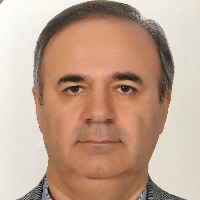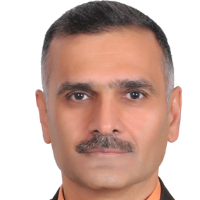Economic evaluation of the Persian Gulf water desalination and the project of water transmission to the southeast mines of the country: A financial computable general equilibrium (FCGE) model
Iran is located in the arid and semi-arid region of the world and is facing a severe water shortage. The share of industries and mines in the total amount of water consumption in this country is about two percent, which is very small as compared to developed countries. However, the geographical distribution and location of industries and mines are not been water-centered, and this has led to many obstacles in providing water resources for industry and mining, despite the low share of this sector compared to the global average. For example, an important part of Iran's mines such as iron and copper mines are located in low-water provinces such as Hormozgan, Kerman and Yazd. But there are two main strategies for managing water resources in industry and mining. The first option is to use saltwater instead of fresh water (desalted seawater), and the second option is to use water recycling processes. In recent years, the high share of the current budget in the country's public budget has made the government unable to complete the construction and operation of infrastructures in various areas, including the water industry. Moreover, despite the sanctions on the Iranian oil industry and the limited foreign exchange earnings, the possibility of financing such projects with the revenues from oil sale has decreased, and the government must inevitably rely on the revenues from taxes, service tariffs, the issuance of government bonds, or the capacity of the private sector. Of course, various methods of financing infrastructure projects sometimes have different effects on the economy. Therefore, it is necessary to study the effect of constructing these infrastructures on the economy according to the way of financing them. This paper aims to provide a dynamic financial computable general equilibrium model that can evaluate the public-private partnership by focusing on the water sector, the effects of building, financing and operating desalination centers and transferring the Persian Gulf water to the mines sector in the southeast of the country.
In order to investigate the trend of changes in the variables of this model, a recursive financial computable general equilibrium is used. After the model is specified, three different scenarios are simulated using the MCP technique and the GAMS software. In all these scenarios, it is assumed that the project will be built for seven years and operated for 15 years. The construction of this project has led to an increase in the supply of unconventional water to the mining sector by 650 million cubic meters. But the financing methods of the project are assumed to be different in these scenarios. In the first scenario, financing is done by the issuing of government bonds, in the second scenario, by the imposing of a tax on the water product, and, in the third scenario, by the issuing of equities and eliminating of water subsidies (in terms of the productivity index).
The results of simulations show that the project, if implemented by the private sector and financed by eliminating water subsidies and issuing equities in the capital market for the building and operation period, will have higher positive effects on the gross domestic production and social welfare than when it is implemented by the public sector and financed by issuing bonds or imposing a tax on water products. In other words, the building and operation of the project by the private sector by the elimination of water subsidies and the issuance of equities in the capital market without increasing productivity will lead to an increase of 0.0224% in the GDP, but it will not make a significant change in the household welfare. If an increase in productivity accompanies it, the GDP will increase by 0.0751 percent and social welfare by 0.0016 percent. On the other hand, if building and operating are done by the public sector and by the issuing of bonds, it will increase the GDP by 0.0175 percent and reduce the household welfare by 0.002 percent. If it is financed by imposing a tax on water products, the GDP will increase by 0.0108 percent, and household social welfare will decrease by 0.0004 percent.
The results show that the building and operation of the project in any way leads to an increase in the GDP. However, the GDP in the public-private partnership method increases more than in the other methods when productivity increases during the operation period (the second case of the third scenario). In the traditional method, if the project is financed by the issuance of government bonds, the increase in the GDP will be greater than that when the project is financed by tax revenues. Also, the change in the household welfare is negative in the first and the second scenarios, where the project is traditionally implemented by the government. In the third scenario, however, where the project is implemented using a public-private partnership contract, the productivity is zero when it is unchanged, but it is positive when it increases in the period of operation.
- حق عضویت دریافتی صرف حمایت از نشریات عضو و نگهداری، تکمیل و توسعه مگیران میشود.
- پرداخت حق اشتراک و دانلود مقالات اجازه بازنشر آن در سایر رسانههای چاپی و دیجیتال را به کاربر نمیدهد.




